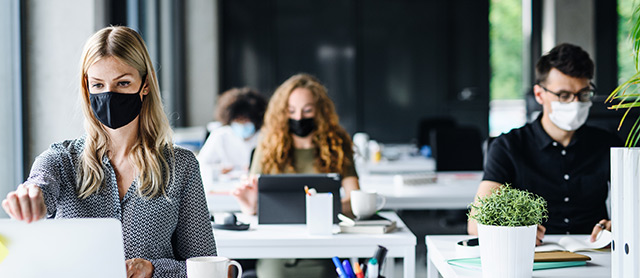Richard Andrews – Executive Coach and Facilitator on the 20Twenty Programme.
Well, it’s happening. Shops, hospitality, offices; the pace of the return to workplaces is increasing. What should leaders be thinking about as they welcome their workforce back, the work experience having been so radically different for over a year?
Back to Normal, or a New Normal?
Some of our colleagues will be longing to get back to exactly how life was before it all began. Of course, it won’t be like that, it can’t be like that. Certainly not for now and quite possible not for a long time. At the very least, you will have revisited your risk assessments and amended your safe systems of work.
It’s inevitable that much of the important social element of work, which it so important in maximising engagement, will be curtailed or feel unnatural. Other work processes may feel cumbersome and unnatural. It may well feel that the new ways of working are counterintuitive, building inefficiencies instead of removing them. Frustrating.
Feeling Safe Going Back to Work
Other’s may have developed a heightened sense of vulnerability during the long period of lockdowns. A familiar and reassuring workplace may now feel unnerving, even scary. Whilst the rational mind might understand that vaccination is a powerful protection, social distancing, face masks and sanitiser are a constant reminder of threat and siege at the hands of an unseen and powerful enemy.
Working at home, or on furlough, staff have ben empowered to manage risk in ways that feel appropriate to them. Suddenly, that autonomy must be relinquished. Personal safety becomes dependant on the behaviour of others.
A Real Leadership Challenge
The challenge is multi-faceted. How do we create an environment that?
- Is safe and just as importantly, feels safe.
- Does not compromise efficiency and effectiveness beyond that which is financially viable.
- Is welcoming, supportive and reassuring.
- Accommodates the needs and emotional responses of those who are desperate to get back to normal as well as those who view the transition with extreme caution and concern.
The solutions will vary from workplace to workplace, but a clear methodology should help.
- Review risk assessments and create clear instruction for all parts of the working day. Where appropriate, guidance for travel to and from work will show that you are taking your duty of care seriously. Ideally, communicate expectations before staff return.
- Enforce your new instructions firmly, but with compassion and understanding.
- Create a staff forum to engage representatives in troubleshooting and adjusting instructions as we learn how best to navigate this new work experience. Meet regularly.
- Don’t sacrifice social interaction opportunities; It may feel that these are high risk activities that are avoidable, but they are vital to engagement and motivation – and we will need that more than ever in the coming months.
- Encourage staff to voice their frustrations and worries, but promote solution focussed discussion, “How could we make that better?”
- Consider the lessons of the last year. There have been efficiencies as well as frustrations in homeworking. Let’s not lose the good stuff. Do we really want “Back to normal”? or are we courageous enough to create a new and better ‘normal?
The 20Twenty Leadership and Business Growth Programme looks in depth at how to manage change, motivate teams and how to communicate effectively through a variety of leadership tools and techniques.
Related Links
Deep dive: Seven rules for ‘hybrid’ remote and office working
Fresh Air Wales – Reducing the risk of SARS-CoV-2 Spread



